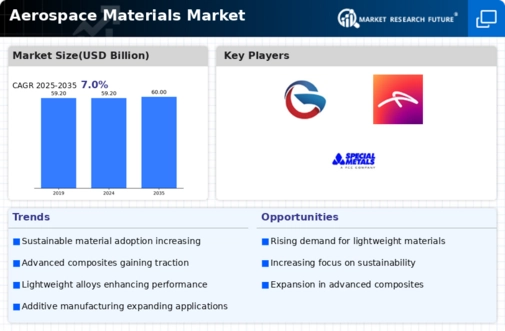Market Share
Aerospace Materials Market Share Analysis
In order to meet the strict demands of the aerospace industry, the Aerospace Materials Market depends on a series of strategic initiatives to maintain and grow its market share. Because aerospace applications are complicated and demanding, these tactics are essential for businesses in this industry. An examination of the primary market share positioning techniques influencing the aerospace materials market is provided below: Superior Composites: Aerospace businesses may meet the industry's demand for performance optimization by investing in the development of innovative composite materials, such as carbon fiber-reinforced plastics, which offer lightweight and high-strength options. Customized Resolutions: Providing materials that are customisable and suited to particular aerospace applications guarantees that businesses can meet the particular needs of various aircraft components, which promotes market distinction and customer loyalty. Collaboration in the Supply Chain: Building solid relationships with manufacturers and suppliers of raw materials guarantees a steady and dependable supply of materials, lowering the possibility of interruptions and raising total production efficiency. OEMs and Research Institutions: Companies may speed innovation, facilitate knowledge exchange, and place themselves at the forefront of aerospace material breakthroughs by collaborating with OEMs and research institutes. High Standards for Certification: Gaining market trust requires adhering to stringent aerospace regulatory standards and receiving the necessary certifications, since manufacturers and aviation authorities only accept aircraft materials that meet severe safety and performance requirements. Proactive Compliance: Organizations can maintain compliance by anticipating changing regulations and making proactive adjustments to materials to meet or beyond industry standards. Fuel economy: Materials that help reduce weight, including sophisticated alloys and composites, become crucial since fuel economy is a crucial component in the aerospace industry. Businesses that concentrate on lightweight solutions have a commercial advantage. Enhanced Performance: Lightweight materials help to improve overall aircraft performance by reducing fuel consumption and enabling longer flight ranges and higher cargo capacities.






Leave a Comment